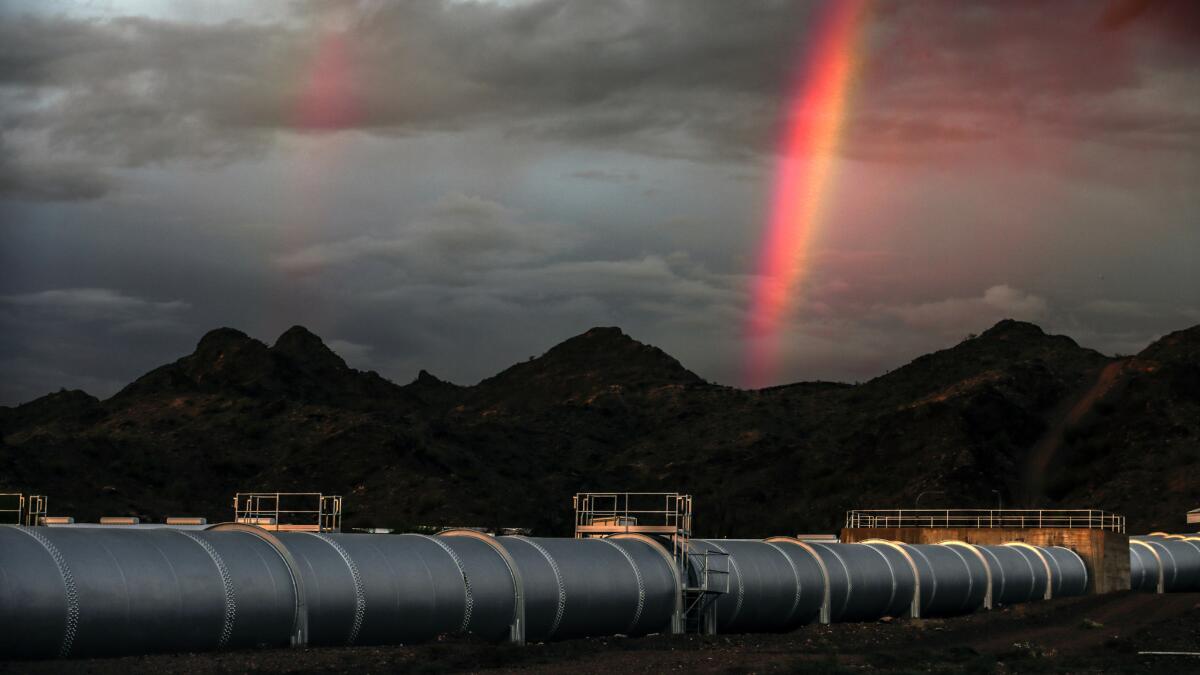Southland’s major water agency is rebuilding depleted regional storage

The Southland’s biggest water agency painted a surprisingly upbeat picture Monday of the region’s water supplies.
Although the Southland remains stuck in a severe drought, officials of the Metropolitan Water District of Southern California say they are rebuilding depleted storage reserves with imports from the north.
They also dismissed concerns about slipping conservation efforts since state regulators eased urban water savings requirements in June.
“I was very pleased that the numbers stayed as high as they did,” said Jeffrey Kightlinger, the district’s general manager.
The region is holding its use to about 16% to 17% below 2013 levels even though it has been a hot year and the precipitation that helped fill major reservoirs in Northern California last winter bypassed the southern end of the state.
“We’ve done a great job,” Kightlinger said.
Citing improved conditions, the State Water Resources Control Board in June relaxed last year’s requirement for a 25% cut in Californians’ overall urban water use.
Since then, statewide savings have declined. In August, conservation dropped to 17.7%, comparedwith 27% during the same month last year.
Although Kightlinger said California was no longer in the drought emergency that prompted the first-ever, statewide mandatory cuts, he acknowledged the future is uncertain.
Eight of the last 10 years have been dry, and the outlook for this winter is murky. “We really don’t know what it’s going to be,” he said.
Metropolitan board President Randy Record also emphasized the need for continued savings. “It’s no time to stop conserving,” he said at a news conference marking October’s start to a new water year.
Roughly half of the Southland’s water supplies come from Metropolitan’s imports from the Colorado River and Northern California.
This year’s jump in State Water Project deliveries is helping refill Diamond Valley Lake, where Metropolitan stores emergency and drought-relief supplies. The Riverside County reservoir should be more than 70% full by the end of the year, officials said.
“That’s the first increase to regional reserves in four years,” he noted.
But environmental groups complain that the district’s supply projections for the next several years are overly optimistic.
“They’re really playing a very dangerous game,” contended Tracy Quinn, a water policy analyst for the Natural Resources Defense Council.
“We’ve seen some tremendous demand rebound over the last few months that I don’t think Metropolitan and other water suppliers in Southern California are incorporating into this sunny picture,” she added.
Twitter: @boxall
ALSO
Ballot measure could upset L.A.’s plan for housing the homeless
Hiker hospitalized after bear that ‘came out of nowhere’ attacks near Sierra Madre
More to Read
Sign up for Essential California
The most important California stories and recommendations in your inbox every morning.
You may occasionally receive promotional content from the Los Angeles Times.











